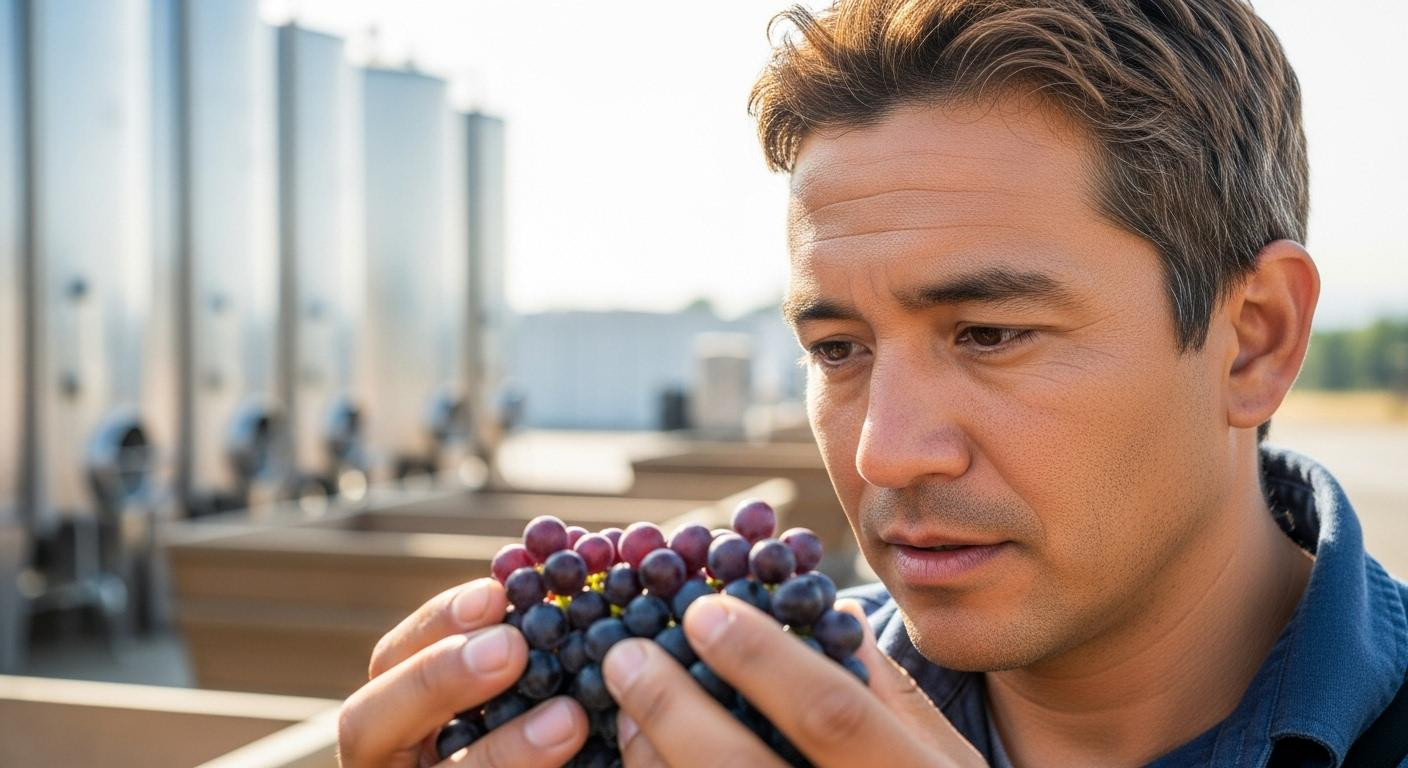Dawn breaks at 6:47 AM across Napa Valley’s golden hills. September mist lifts from Pinot Noir vines as crush begins at a family winery. Three days ago, wine country meant crowded summer tastings and $300 bottles. Now, standing where harvest transforms four American regions into something locals fiercely protect, the truth emerges. Fall’s 6-week window from September 15 to October 31 delivers perfect 55-75°F temperatures, 40% fewer crowds, and 25% lower accommodation rates across overlooked valleys like Oregon’s Willamette and New York’s Finger Lakes.
When America’s wine valleys transform (September 15 to October 31)
The harvest calendar reveals why locals book this exact window. Napa’s Cabernet Sauvignon reaches peak ripeness from September 25 to October 25. Willamette Valley’s Pinot Noir harvest peaks in early October when morning mists create ethereal vineyard scenes. Finger Lakes Riesling picking begins mid-September, coinciding with spectacular fall foliage.
Weather data from 2025 confirms this timing magic. September temperatures across all four regions settle into the 55-75°F sweet spot. Rain probability drops to just 12% between September 15 and October 15. Tourist volumes plummet 40% after Labor Day in Napa, while Willamette Valley maintains its moderate 2.5 million annual visitors versus Napa’s crushing 3.8 million.
Accommodation rates reflect this shoulder season advantage. Luxury properties drop prices 25% compared to summer peaks. Weekday rates fall 30% below weekend pricing. The 6-week fall window aligns weather, harvest activity, and crowd levels into perfect synchronicity.
The four regions where fall delivers (and how they differ)
Napa Valley: established luxury meets harvest energy
Golden hills stretch across California’s most famous wine region. Mediterranean architecture frames 475 wineries where Cabernet Sauvignon dominates. Lodging ranges from $200 to $600 per night in luxury resorts. Hot air balloon rides float above harvest activity while Michelin-starred restaurants serve farm-to-table cuisine.
September and October bring harvest festivals throughout the valley. The famous crowds thin but energy intensifies as winemakers work 16-hour days. Temperatures hover between 55-75°F, perfect for outdoor tastings.
Willamette Valley: Oregon’s Pinot Noir secret
Emerald hills roll through Oregon’s overlooked wine country. Farmhouse architecture houses 700 wineries specializing in world-class Pinot Noir. Accommodation costs $150 to $400 nightly, significantly less than Napa’s premium rates. Misty mornings create magical vineyard photography opportunities.
October’s Pinot Noir harvest coincides with crisp 50-70°F temperatures. Farm-to-table restaurants showcase Pacific Northwest ingredients. The region maintains intimate tasting room experiences with 2.5 million annual visitors compared to Napa’s tourist masses.
What fall’s harvest window actually offers
Crush pad access and barrel tastings
September through October opens winery production areas normally closed to tourists. Crush pads invite visitors to witness Pinot Noir pressing in Willamette Valley. Napa’s boutique producers offer barrel tastings of current vintages. Walla Walla wineries demonstrate hand-sorting techniques while Finger Lakes cellars showcase Riesling fermentation.
This insider access disappears outside harvest season. Standard tastings ($15-75) include production facility tours. Vineyard experiences pair perfectly with autumn’s cooler temperatures and golden light quality.
Harvest festivals and vineyard dinners
Regional celebrations mark each area’s specialty grape harvest. Napa’s Harvest Festival dominates September with live music and artisan food vendors. Willamette Valley’s Pinot Noir Celebration extends into late October. Finger Lakes hosts its Grape and Wine Festival throughout September, combining harvest activities with spectacular fall foliage tours.
Long-table vineyard dinners pair fresh-harvest cuisine with new wine releases. Local cheese producers and seasonal ingredients create memorable outdoor dining experiences. Winemaker-hosted tables offer intimate conversations impossible during busy summer seasons. Advanced booking proves essential, requiring 3-4 months notice. Dinner costs range from $75 to $200 per person.
The timing secrets locals protect
Insiders know why September 15 to October 15 represents wine country’s golden window. Weather remains perfect before November rain arrives in northern regions. Tour bus traffic decreases dramatically on weekdays. Peak foliage meets active harvest across Finger Lakes region.
The 6:47 AM secret reveals itself at sunrise. Vineyard mist creates ethereal photography opportunities. Tasting rooms open quietly before 11 AM crowds arrive. Winery cafés serve breakfast to early visitors seeking authentic experiences. October’s golden light transforms every region with longer shadows, warmer tones, and crisp air that makes wine taste brighter.
This isn’t just visiting wine country during harvest season. It’s experiencing the precious 6-week window when winemakers themselves celebrate their valleys’ transformation from summer’s tourist circus into autumn’s authentic working landscape.
Your questions about fall wine trips answered
When should I book accommodations for September-October wine trips?
Reserve lodging 3-4 months ahead for the September 15 to October 15 peak window. Napa Valley and Willamette Valley properties fill fastest due to harvest demand. Finger Lakes and Walla Walla offer more last-minute availability. Prices drop 25% after October 20 when harvest activity winds down. Weekday stays cost 30% less than weekend rates across all regions.
What makes fall superior to summer for wine country visits?
Harvest season provides access to normally closed production areas including crush pads and barrel rooms. Ideal temperatures range from 55-75°F versus summer’s oppressive 85-95°F heat. Tourist crowds decrease 40% after Labor Day. Fall foliage peaks in eastern regions like Finger Lakes. Seasonal festivals and vineyard dinners showcase local cuisine paired with new wine releases.
Which region offers the best value for fall wine trips?
Finger Lakes delivers exceptional value with lodging from $120-300 nightly versus Napa’s $200-600 range. Wine tastings cost $10-50 compared to Napa’s $20-100 fees. Restaurant meals average $15-60 versus Napa’s $25-100 pricing. Walla Walla provides similar Pacific Northwest value. Willamette Valley falls mid-range while Napa commands premium luxury pricing but delivers correspondingly upscale experiences.
Steam rises from morning coffee at 6:47 AM in Finger Lakes. September’s golden light touches vineyard slopes as crush begins at the winery below. Three days ago, wine country meant summer crowds and expensive Napa tastings. Now the secret emerges: fall’s 6-week window when harvest transforms four American regions into something locals actually protect.
